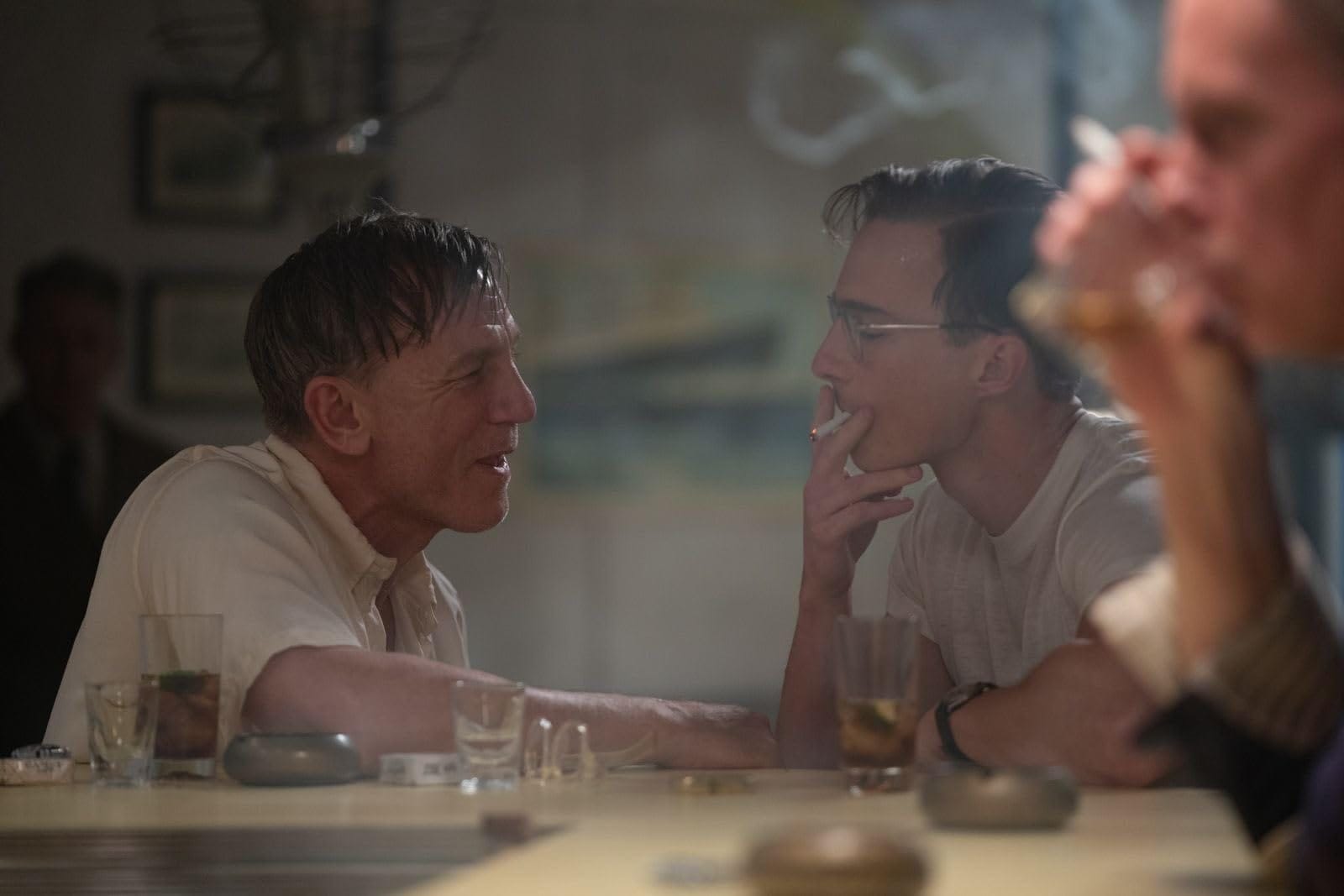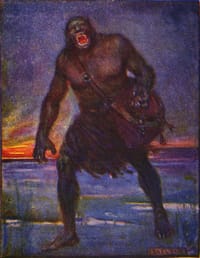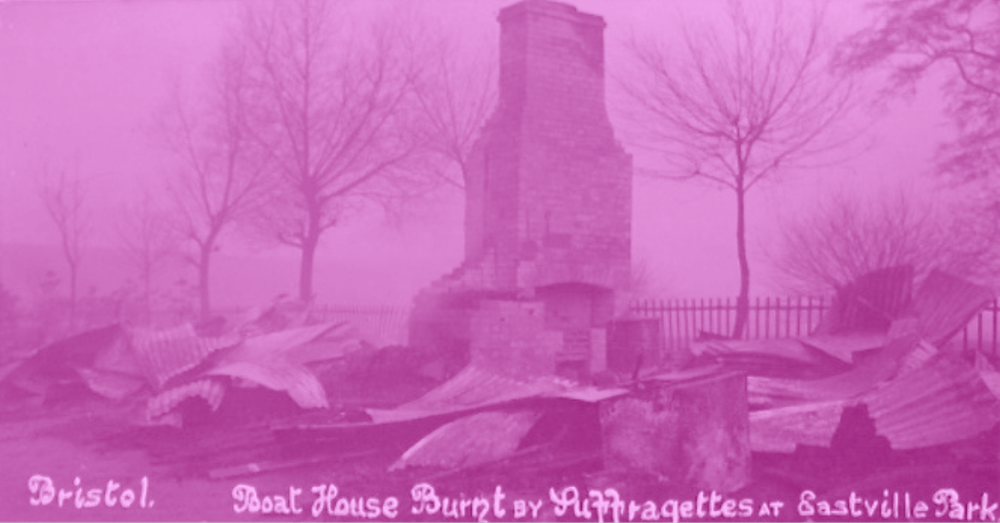When the adaptation of William S. Burroughs novel Queer was announced with the casting of Drew Starkey and Daniel Craig, it was hard not to roll my eyes at the online adulation poured on the concept. Twitter’s expectations of a rosy and tender love story jarred with my knowledge of Burroughs–a lifelong drug addict, fugitive murderer and avant garde writer of the Beat generation. It jarred even more with the novel when I read it: the story of US expat William Lee—one of Burrough’s fictional alter egos—becoming slowly obsessed with his fellow American Eugene Allerton, a hot and cold lover, who is implied to be straight but allowing the relationship to happen because it gets him spending money.
When the first trailer came out, many—including myself—admired its artful composition, but couldn’t help but notice that it seemed to advertise the film according to the audience’s expectations: a soft machine of sorts, queer good against homophobic evil. I suspected this was simply setting up the expectations for a subversion, but it remained to be seen how this would land. The novel was unfinished when it was published in 1985, about 30 years after it was written. Burroughs chose never to go back and give it an ending.
Interviews made clear director Luca Guadagnino and screenwriter Justin Kuritzkes achieved this by padding out the story with further information from other published works such The Yage Letters and from Burroughs biography, along with consultation from Oliver Harris, noted Burroughs scholar. And it is not simply that they include facts or references to Burroughs life in the film. All of the film displays a deep understanding and engagement with Burroughs’ work. Where changes and additions have been made they feel careful, considerate and deliberate—all in purpose of Guadagnino’s artistic vision and the message he is trying to convey.
The film starts out similarly to the book, with title cards for each act of the film displaying chapter numbers. It opens with William Lee spending his time in Mexico drinking his days away and having casual sex with younger men. Around this time he notices and becomes infatuated with Allerton, a recently discharged Navy seamen who hangs around the same bars as Lee whilst proving increasingly hard to read. In the second and third chapters of the book, Lee and Allerton travel South America looking for a rare psychoactive substance: Yage. In the relationship between the two men the changes start to manifest: Allerton expresses more interest and willingness than in the book. No longer the straight sailor being lusted after, here he appears as a young man dealing with a burgeoning feeling and sexuality which is criminalised. Lee likewise is changed, losing his most unsavoury aspects, what Harris describes as ‘the way Lee performs the part of the Ugly American as a critique of imperialism, holding up a dark mirror to the culture that demonised homosexuals and heroin addicts.’[1] Where Lee is often full out racist and bigoted in the book, here there are only a few lines and scenes where he displays ‘the colonialist entitlement of expatriate Americans.’ Instead Guadagnino chooses to deal with these themes in a more subtle, and as Harris argues, more ‘visual’ way.
The sets of Mexico and other locations were created for the film, to the extent they can often appear fake. But rather than detracting from the film, as Harris notes this artificiality makes clear ‘the film is set in a Mexico of the mind, a real-world geography reshaped by Lee’s agonising inability to engage with place or connect with people except through the all-consuming, shattering fantasies of his desire.’ This dynamic is nowhere more apparent than in Lee’s line to Allerton whilst he explains his theory that the human race is all part of the same energy and matter:
A wise old queen taught me that I had a duty to live. You know, to conquer hate with knowledge, and sincerity, and love. The difficulty is to convince someone else he is really a part of you.
In these lines the main struggle of the film makes itself known—not only the struggle between Lee and Allerton, but between Lee and himself, between Burroughs work and society. To understand what I mean here better, it’s important to provide context. The novel was mostly written while Burroughs was awaiting trial for the allegedly accidental homicide of his common-law wife Joan Vollmer. Drunk at a party, Burroughs and Vollmer agreed to perform a William Tell routine they did as a party trick. Intoxicated, Burroughs allegedly accidentally shot Vollmer in the head, killing her instantly. Whilst eyewitnesses at the time corroborated the story that this was a tragic accident occurring under the influence, Burroughs himself was not convinced and maintained for the rest of his life a suspicion that he had chosen to do it subconsciously. In his own words from the introduction to Queer:[2]
I am forced to the appalling conclusion that I would never have become a writer but for Joan's death, and to a realisation of the extent to which this event has motivated and formulated my writing... The death of Joan brought me in contact with the invader, the Ugly Spirit, and manoeuvred me into a life-long struggle, in which I had no choice except to write my way out.
It is this ‘Ugly Spirit’ which acts as an invisible enemy and theme present within the film and in the pervasive, oppressive atmosphere of the surreal dream sequences. Lee is attracted to Allerton, he believes that their coming together is proof that people, and more specifically the two of them, are one and the same in a grand universal spirit. A very noble kind of idea, but one that can very easily become controlling and claustrophobic and indeed does. At one point Lee half-jokingly threatens to buy a half share in the bar they frequent so he can use financial abuse against Allerton. The film says "Love can heal wounds" as Lee kisses Allertons broken rib in their first sexual encounter, but it can also cause them, and it can also kill. Lee’s sexuality is an outlaw one, as made clear by dreams in which he imagines his fellow queer expats in concentration camp uniforms. Burroughs was taken from a young age with outlaws, and in particular those US outlaws and homeless ‘the Johnson family’ who would exercise their own moral code outside of society’s hypocrisy. But this criminalisation alone doesn’t lend it a moral quality. In their quasi-sugar-daddy-situationship, Lee’s frustration with Allertons coldness can appear smothering and manipulative.
This dynamic in the relationship is brought to the fore through another significant change: the inclusion of Lee’s addiction to heroin. Burroughs claimed Queer represented a time where he and Lee were ‘in withdrawal’, reflected in the change from first person (used in his first novel Junky) to third. Retrospective scholarship and the psychological disintegration suffered by Lee in the novel make it apparent this was a bold-faced lie. The effect drug addiction has on Lee’s ability to have healthy relationships becomes painfully clear when he actually does suffer ‘junk-sickness’ (read: withdrawal) and the story screeches to a halt whilst they search for opioids. Kenyan writer Waithera Sebatindira noted this dynamic in their work Through An Addict’s Looking Glass as they ‘wondered how it could be so ungovernable while simultaneously adhering to its own strict logic.’[3]. Lee’s desire for his relationship with Allerton to take on some higher meaning, its development entwined with his search for Yage, a substance which one expert tells him is not a ‘high’ in the usual sense, indicates that the relationship has taken on the character of addiction, the chase for satisfaction which can never really be achieved. Everything is centred around what he can get out of it. Sebatindira describes this mindset as such:
So begins the chase. Because in the same instant that you understand that the first can’t last, you believe if you can just get the conditions exactly right, you can win over time and matter. You can make the finite infinite.[4]
This is not to say the search for Yage is entirely controlling, however. Burroughs often thought of himself as a kind of psychic explorer, or as fellow addict and Scottish writer Alexander Trocchi was referred to, a ‘Cosmonaut of Inner Space’.[5] Lee’s attempt to use Yage as a way of giving himself telepathy is also clearly a sincere desire to have a more authentic and honest form of intimacy with Allerton. Whilst he can be many unpleasant things, through Craig’s acting and the films visual storytelling you get the sense that Lee’s addiction and understanding of human relationships come from very deep wounds (Ted Morgan’s biography of Burroughs, Literary Outlaw, certainly complicates the image of Burroughs as an amoral creep). Recreations of certain scenes from his life play out in the background at certain points, the traumas of the past playing out again and again. As Burroughs sees it, Yage is both a way of actualising the Ugly Spirit and breaking free from it, of breaking down the boundaries between human beings and living more freely.
Achieving this when many systems of oppression and control still exist proves, unsurprisingly, very difficult. Internalised shame plagues both Lee and Allertons consciousness (the imagery of centipedes appears throughout as a manifestation of Burroughs own sexual disgust), the shadow of Lee’s violent and harmful past looms over him and both Yage and the film provide no easy answers. But this is perhaps the point. That more authentic and liberating social relations will carry the same risks and uncertainties, but must be fought for all the same. If we are not part of the same universal consciousness or energy, at the very least we share the same world, and how we share it is important to how we liberate it. The film’s action is set to music composed by Trent Reznor and Atticus Ross as well as a selection of songs by artists often inspired or influenced by Burroughs, with an implicit message that through artists we may like such as Nirvana and Sinead O’Connor there exists an intellectual link and heritage shared with Burroughs. We, like him, face the struggle against the Ugly Spirit, those oppressive ideologies of control which we have internalised.
The film, in the spirit of Burroughs, is ambiguous on our capacity to truly win against these ideologies in the sense of a clean break. In his final journal entry he wrote: ‘There is no final enough of wisdom, experience – any fucking thing. No Holy Grail, No Final Satori, no final solution. Just conflict.’ But alongside this he made his final comment on the world: ‘Only thing can resolve conflict is love, like I felt for Fletch and Rusky, Spooner and Calico. Pure love. What I feel for my cats present and past. Love? What is It? Most natural painkiller what there is. LOVE.’[6] It turned out there was some tenderness to be found in the story, after all. All of it is hard fought for, and well earned.
In the interests of transparency it seems only right to mention that I am a recovering addict, which might go some way to explaining the sympathy I allow towards Burroughs’ work and life. That is not a sympathy everybody will feel willing to give, which is perfectly understandable. When it comes to the literature of addiction, Burroughs stands as one of the most controversial and upsetting of its figures. And it would be fair to say I have a vested interest in the argument I am making, which probably says something about me. But let’s be factual here: Burroughs is dead, and the diverse and fragmented body of the Addict International is still alive. And the truth of the matter is without the allowance of community and support and compassion of other human beings, many of us would be dead. It is only by continuing to live that we—I have the chance to exorcise the Ugly Spirit from our relationships. Love is the most natural painkiller there is; I beg no fix except that.
Oliver Harris, “Not Everything Is Permitted”, RealityStudio, 2024. ↩︎
James Campbell, “Struggles with the Ugly Spirit”, The Manchester Guardian, 1997. ↩︎
Waithera Sebatindira, Through An Addict’s Looking-Glass, Hajar Press: London, 2023, p. 3 ↩︎
Ibid., p. 56. ↩︎
Anna Battist, “Cosmonaut, Rebel and Man: Spotlight on Alexander Trocchi”, Erasing Clouds, 2002. ↩︎
William S. Burroughs, Last Words : The Final Journals of William S. Burroughs, Grove Press, 2000. ↩︎








